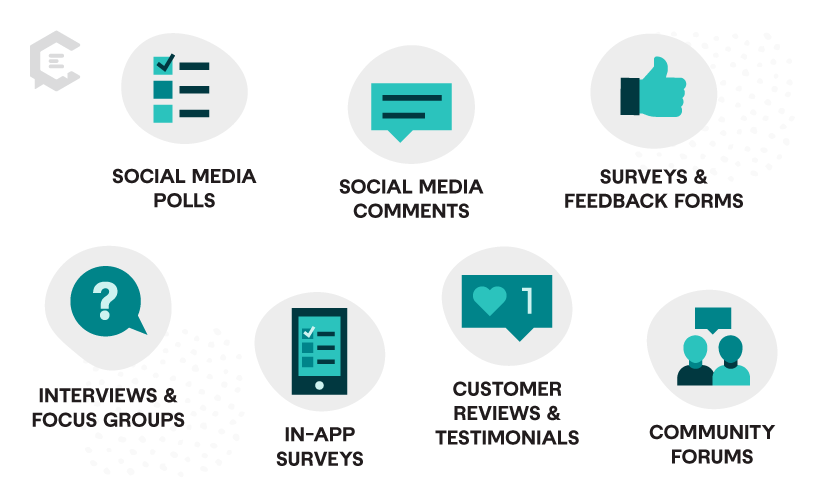There’s something about Legos. They never get old, and fans encompass all ages from all parts of the globe.
The LEGO Ideas campaign, launched in 2008, invites LEGO enthusiasts to create original builds, which are showcased on the LEGO Ideas website. To rally support for their builds, creators promote their creations online. Once a build garners 10,000 supporters, LEGO conducts a review to determine whether to turn it into an official LEGO product. The campaign has spawned many great themes, including Ghostbusters Ecto-1 and Pirates of Barracuda Bay.
LEGO Ideas has several key elements:
- Users showcasing their creativity
- Online promotion to gain support for ideas
- Public voting to gauge user preferences
- LEGO integrating user-generated content (UGC) into its marketing and product development strategies
No wonder LEGO is such a household name.
In this guide, we talk about the value of audience insights in the content creation process, how to encourage customers to contribute user-generated content, and how to adapt content to drive audience engagement based on audience feedback.
The Value of Audience Engagement in Content Development
Each piece of content you put out there has to have an objective, whether that’s brand awareness, better search visibility, or more sales. Needless to say, your content must be created with a target audience in mind.
Therefore, it makes sense that your content development approach involves the very people your content is trying to reach.
Enhancing content relevance and authenticity
Consider a wealth management firm looking to expand its financial services for high-net-worth clients. What types of content should they develop?
In the planning stages, content creators need to study the audience. One effective way to achieve this is by gathering feedback directly from clients.
The firm can host virtual client panels or surveys to gather input on clients’ most pressing financial concerns, such as tax optimization strategies or estate planning.
This allows the firm to incorporate client feedback into its financial content strategy, like whitepapers addressing various tax scenarios or retirement strategies tailored to affluent individuals. This approach aligns the content with the needs and expectations of its audience, which, in turn, maximizes engagement and drives client satisfaction.
Building audience loyalty and trust
Lululemon is a global brand known for prominently featuring customers on its website, social media pages, and even in-store displays. By showcasing user-generated content that depicts people engaging in various fitness activities while wearing Lululemon apparel, the brand demonstrates that its products are genuinely used and appreciated by individuals from different walks of life.
Additionally, Lululemon routinely organizes events, challenges, and other projects for customers to join. This builds a sense of belonging, increasing audience loyalty and trust over time. (Not to mention the tons of content these events can generate.)
One of the primary uses of content in your marketing strategy is to build community and brand loyalty. Before we get into tips that are specific to co-creating content with your audience, here are some more macro ways to build a relationship with the audience you’re targeting.
Strategies for Co-Creating Content with Your Audience
So, how do you tap into the power of your audience to create stellar content? There are several ways, but two of the most common involve:
- Leveraging their insights to drive your content
- Encouraging them to create the content themselves
Gathering audience insights
“Knowledge is power” is such an overused expression it’s almost cliché. But without the right data and insights to drive your content, it may lack the foundation necessary to effectively resonate with your audience.
There are various tools and techniques you can use to collect audience insights:
- Social media polls: Allow your audience to vote and express their opinions through interactive polls on Facebook, LinkedIn, or Instagram.
- Social media comments: Turn your posts’ comments section into a safe place where readers can leave direct feedback or discuss a topic further.
- Surveys and feedback forms: Implement these tools at various touchpoints across different platforms, including at the end of a blog post, after a customer support call, post-purchase, when visitors leave your website, and after a webinar, training session, or workshop.
- Interviews and focus groups: Conduct one-on-one or group interviews to gather detailed insights into customers’ needs, preferences, and attitudes toward a product, service, or market.
- In-app surveys: Collect opinions or feedback from users via your app’s built-in feedback or survey form.
- Customer reviews and testimonials: Obtain insights into actual user experiences through platforms like Amazon, Yelp, and dedicated review sites.
- Community forums: Use forums like Reddit for direct audience engagement and gathering opinions about specific topics.
Examples of insights you can gather with these tools include:
- Whether your readers prefer short-form or long-form content
- Product concerns, opinions, or questions that can be addressed in a blog post
- Which webinar topics do attendees find the most engaging so you can create follow-up content
- Users’ experiences with a recently launched service, which you can turn into case studies or customer success stories
- The community’s opinions regarding industry trends, which you can summarize in a blog post, with additional insights from your team of subject matter experts
Encouraging user-generated content
User-generated content is valuable for several compelling reasons:
- Adds credibility: Because it reflects real experiences from real people, it adds credibility to your brand.
- Carries significant influence: This is because 88 percent of consumers trust recommendations from family and friends over traditional media, while 46 percent believe online reviews are just as trustworthy as recommendations from family and friends.
- Comes in diverse formats: UGC takes various forms, such as photos shared on social media, videos posted on YouTube, blog comments, or product reviews. Variety in content prevents monotony and accommodates different communication preferences.
Although UGC is generally given voluntarily by customers who truly enjoy a product, service, or brand, there are some things you can do to create a positive, motivating environment for sharing experiences:
- Create shareable experiences: Design products, services, or interactions in a way that customers want to voluntarily share them. In other words, provide high-quality products or services, integrate unexpected elements that make customers go “wow,” design aesthetically pleasing products, and create shareable content such as entertaining videos and engaging infographics.
- Run contests and challenges: Organize contests or challenges that require customers to create content. Examples are photo contests and video submissions. Don’t forget to incentivize their hard work. Incentives can include discounts or access to exclusive content.
- Feature user content: Acknowledge audience contribution by regularly showcasing UGC on your official channels. This may motivate other customers to contribute as well and increase your overall audience engagement.
- Engage with user content: Like, comment, and share user-contributed content. This shows you value the time, effort, and creativity they put into the content.
- Leverage loyalty programs: Connect UGC incentives with your loyalty program. Offer rewards or exclusive perks to customers who regularly participate in UGC campaigns.
Integrating Audience Insights Into Your Content Strategy
Knowing what your audience actually wants takes the guesswork out of content marketing. But it’s just the first step. The next is incorporating those insights into your content.
Adapting content based on audience feedback
Integrating audience feedback into your content strategy is an ongoing process, not a one-and-done undertaking.
Some examples to note:
- Tech blog: Readers may express interest in specific emerging technologies through social media comments and interactions. The blog team adjusts its content calendar to include more in-depth coverage of those topics.
- Social media content calendar: A social media manager may adapt the content calendar based on user’s level of engagement on specific topics and formats.
- E-learning platform content: Learners may prefer specific topics or learning formats, and the e-learning course provider can refine its offerings based on this feedback.
- Product tutorial videos: Companies may adjust their product tutorials based on viewer comments and suggestions to meet audience expectations.
- Fitness app workout plans: If certain exercises elicit more positive responses, the app may tailor content to include more.
Measuring the impact of audience-driven content
Now, how do you know your audience-driven content is driving results? Tools and metrics you can implement include:
Metrics
- Engagement rate: Measure the overall engagement rate by combining likes, comments, and shares to get a sense of how actively the audience is interacting with audience-driven content.
- Reach and impressions: Check for impressions to measure how many people have seen the content. This helps you gauge the content’s reach.
- Click-through rate (CTR): For UGCs that include links, monitor how many users clicked through to a landing page or the brand’s website.
- Conversions: Track conversions, such as signups or sales.
- Sentiment: Measure overall sentiment by analyzing comments or reviews. Positive sentiment means the audience is responding favorably to your content.
Tools
- Google Analytics for website traffic
- Social media management tools such as Buffer and Hootsuite to track engagement and analyze post performance across platforms
- Hashtag tracking tools such as Brandwatch to monitor the usage and performance of branded hashtags
- Social listening tools such as Emplify (formerly Socialbakers) to monitor conversations about your brand
- Survey and feedback tools to collect direct feedback from users regarding their perception of the content
Maximizing the Power of Audience Contributions
We’ve always said, “Creating stellar content takes a village.” As the content landscape becomes more competitive, listening to your audience and using what they’re saying to develop top-notch content is the path forward. For content to resonate, view your audience for what they truly are — collaborators rather than mere spectators.
Need help making your content stand out? Speak with a ClearVoice content specialist to get started discussing your content needs and goals today.








